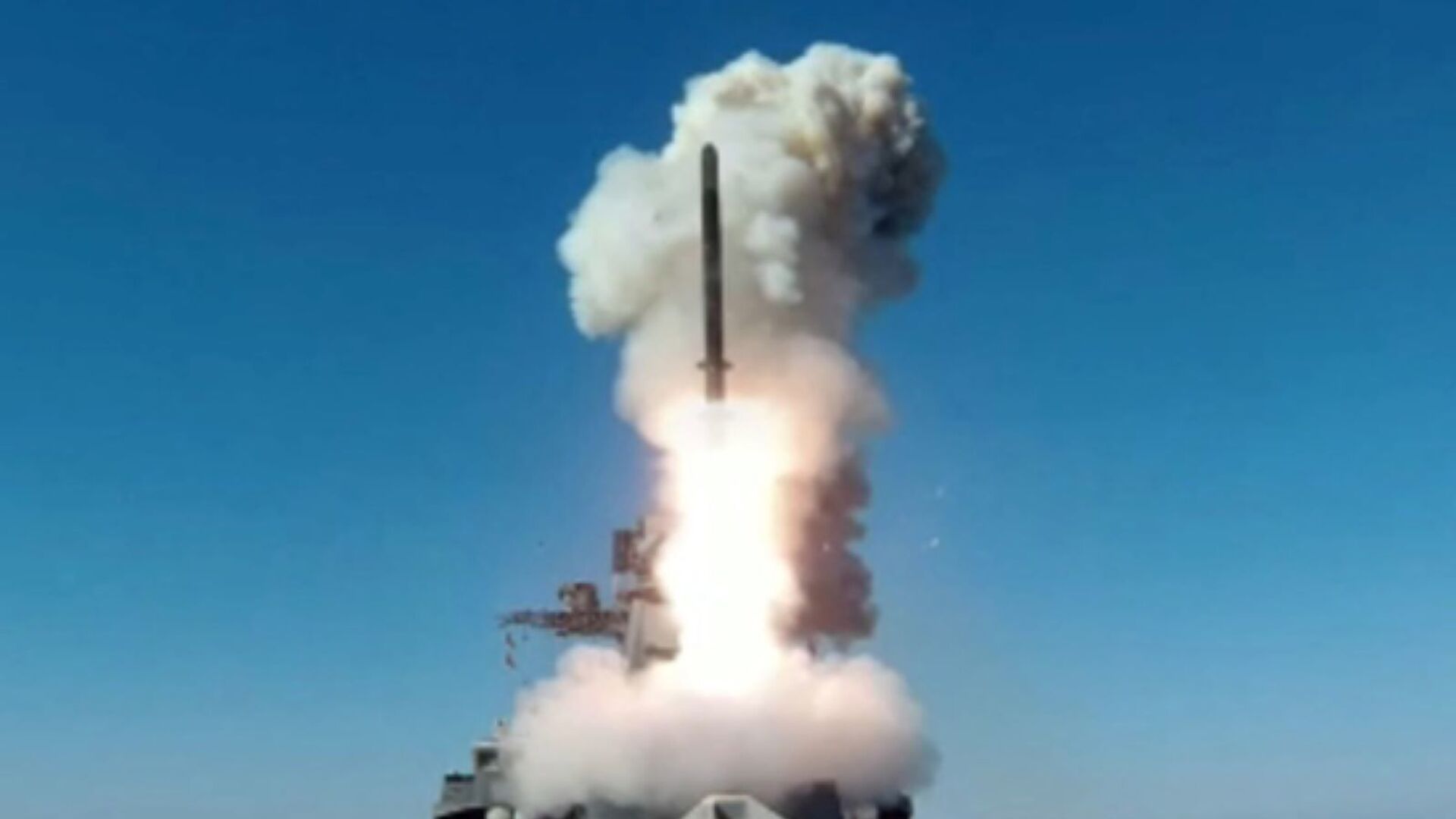https://sputniknews.in/20250818/russias-kalibr-missile-battle-tested-answer-to-indias-naval-needs---expert-9615772.html
Russia’s Kalibr Missile: Battle-Tested Answer to India’s Naval Needs - Expert
Russia’s Kalibr Missile: Battle-Tested Answer to India’s Naval Needs - Expert
Sputnik India
India is ramping up its naval flotilla, acquiring fighter jets for its aircraft carrier Vikrant, building warships to expand its fleet, and plans to procure... 18.08.2025, Sputnik India
2025-08-18T20:00+0530
2025-08-18T20:00+0530
2025-08-18T20:45+0530
sputnik opinion
indian navy
india
russia
new delhi
missiles
anti-ship cruise missile
anti-submarine warfare
submarine
nuclear-powered attack submarine
https://cdn1.img.sputniknews.in/img/07e7/04/19/1681619_0:118:1600:1018_1920x0_80_0_0_d2ed6fbaeee53b46b63bb5d3c74cb752.jpg
India is looking to acquire long-range cruise missiles for its submarines.The Indian Navy's time-tested relationship with Russia, both in warship construction and nuclear submarine technology, appears to be tilting the scales in Kalibr's favour.Interestingly, the BrahMos' submarine-launched version has remained more of a promise than an operational reality. The inability to field it effectively underwater during the recent India-Pakistan military confrontation left a critical gap in India's undersea strike capability. This is where the Russian system steps in, he added.The Kalibr-PL (its export variant called Club-S) provides exactly what the Indian Navy needs today: a solution compatible with torpedo tubes, capable of launching not just land-attack cruise missiles with ranges up to 1,500 km, but also anti-submarine missiles and torpedoes, the military analyst stressed.Kalibr is certainly the best choice because of its versatility and credibility, he said, explaining that rather than being a single missile, it's a comprehensive family of systems. It offers the Navy multiple capabilities — including anti-ship, land-attack, and anti-submarine roles — all deployable from the standard 533 mm torpedo tubes already in service with India.That kind of adaptability is a strategic asset, he stated. Just as crucial is its battlefield credibility: unlike many systems that remain untested beyond the drawing board, Kalibr has seen real combat during the Ukraine conflict, the strategic affairs expert emphasised.
https://sputniknews.in/20250815/sanctions-or-tariffs-nothing-can-stop-india-russia-momentum-ambassador-vinay-kumar--9602273.html
india
russia
new delhi
delhi
Sputnik India
feedback.hindi@sputniknews.com
+74956456601
MIA „Rossiya Segodnya“
2025
Pawan Atri
https://cdn1.img.sputniknews.in/img/07e6/0c/13/139630_147:0:831:684_100x100_80_0_0_8fa2b25903e7787fe6a2698552c167df.png
Pawan Atri
https://cdn1.img.sputniknews.in/img/07e6/0c/13/139630_147:0:831:684_100x100_80_0_0_8fa2b25903e7787fe6a2698552c167df.png
News
en_IN
Sputnik India
feedback.hindi@sputniknews.com
+74956456601
MIA „Rossiya Segodnya“
Sputnik India
feedback.hindi@sputniknews.com
+74956456601
MIA „Rossiya Segodnya“
Pawan Atri
https://cdn1.img.sputniknews.in/img/07e6/0c/13/139630_147:0:831:684_100x100_80_0_0_8fa2b25903e7787fe6a2698552c167df.png
indian navy, india, russia, new delhi, missiles, anti-ship cruise missile , anti-submarine warfare, submarine , nuclear-powered attack submarine, brahmos supersonic cruise missile, delhi
indian navy, india, russia, new delhi, missiles, anti-ship cruise missile , anti-submarine warfare, submarine , nuclear-powered attack submarine, brahmos supersonic cruise missile, delhi
Russia’s Kalibr Missile: Battle-Tested Answer to India’s Naval Needs - Expert
20:00 18.08.2025 (Updated: 20:45 18.08.2025) India is ramping up its naval flotilla, acquiring fighter jets for its aircraft carrier Vikrant, building warships to expand its fleet, and plans to procure naval cruise missiles to arm them.
India is looking to acquire long-range cruise missiles for its submarines.
The Indian Navy's time-tested relationship with Russia, both in warship construction and nuclear submarine technology, appears to be tilting the scales in Kalibr's favour.
"Kalibr is the most realistic option for India right now. It is already contracted, combat-tested, and designed for seamless integration with our existing submarines. Unlike MBDA's NCM (a naval derivative of the SCALP-EG air-launched cruise missile), which is advanced but still burdened by export restrictions and integration delays, Russian Kalibr gives India a working solution today and a scalable one for the country's future SSN (nuclear attack submarine) fleet," stated Gaurav Kumar, a researcher at India's oldest think tank, the United Service Institution of India (USI), New Delhi.
Interestingly, the BrahMos' submarine-launched version has remained more of a promise than an operational reality. The inability to field it effectively underwater during the recent India-Pakistan military confrontation left a critical gap in India's
undersea strike capability. This is where the Russian system steps in, he added.
The Kalibr-PL (its export variant called Club-S) provides exactly what the Indian Navy needs today: a solution compatible with torpedo tubes, capable of launching not just land-attack cruise missiles with ranges up to 1,500 km, but also anti-submarine missiles and torpedoes, the military analyst stressed.
"India's choice reflects pragmatism over pride. While BrahMos may one day evolve into a formidable submarine weapon, the here-and-now solution lies with Kalibr. For a Navy that cannot afford capability gaps in an increasingly contested Indo-Pacific, the decision seems less like dependence and more like smart strategic hedging," Kumar noted.
Kalibr is certainly the best choice because of its versatility and credibility, he said, explaining that rather than being a single missile, it's a comprehensive family of systems. It offers the Navy multiple capabilities — including anti-ship, land-attack, and anti-submarine roles — all deployable from the standard 533 mm torpedo tubes already in service with India.
That kind of adaptability is a strategic asset, he stated. Just as crucial is its battlefield credibility: unlike many systems that remain untested beyond the drawing board, Kalibr has seen real combat during the Ukraine conflict, the strategic affairs expert emphasised.
"For India, it also plays a bridging role. DRDO's own submarine-launched cruise missile is still a few years away. Until then, Kalibr gives us the range, precision, and deterrence we need in a contested maritime environment. Kalibr strengthens India's undersea punch immediately while giving us breathing space to develop our indigenous systems. It's not just a procurement choice, it's a strategic investment in a layered deterrence environment," Kumar concluded.



